Is This a Revolution? Or Are People Just Very Ticked Off?
In a new book, Fareed Zakaria explores how much the times are a-changin’. At risk, he says, is the entire global system.
… something is happening here but you don’t know what it is
Do you, Mr. Jones?
—Bob Dylan, “Ballad of a Thin Man”
Something is happening to us—to Americans, to the world—and we don’t know what it is. Is the United States in the throes of some kind of revolution, with a vampiric Donald Trump rising from the political undead to threaten (more openly, this time around) the destruction of the U.S. Constitution itself? Is the entire post-World War II global system—or what remains of it—facing some kind of revolutionary upheaval as well? Russia’s murderous president, Vladimir Putin, continues to violate every postwar norm, territorially and otherwise, with China mostly on his side. Together they are helping to unravel an ever-more ragged global consensus that, if Trump is reelected U.S. president eight months from now, he could well rip apart for good. “Where Globalism Goes to Die” was the motto of the 50th annual Conservative Political Action Conference held in February at National Harbor, Maryland, where Trump was welcomed as a conquering hero.
… something is happening here but you don’t know what it is
Do you, Mr. Jones?
—Bob Dylan, “Ballad of a Thin Man”
Something is happening to us—to Americans, to the world—and we don’t know what it is. Is the United States in the throes of some kind of revolution, with a vampiric Donald Trump rising from the political undead to threaten (more openly, this time around) the destruction of the U.S. Constitution itself? Is the entire post-World War II global system—or what remains of it—facing some kind of revolutionary upheaval as well? Russia’s murderous president, Vladimir Putin, continues to violate every postwar norm, territorially and otherwise, with China mostly on his side. Together they are helping to unravel an ever-more ragged global consensus that, if Trump is reelected U.S. president eight months from now, he could well rip apart for good. “Where Globalism Goes to Die” was the motto of the 50th annual Conservative Political Action Conference held in February at National Harbor, Maryland, where Trump was welcomed as a conquering hero.
Or are we, instead, engaged not so much in revolution as a series of counter-revolutions—in other words, a domestic and global reactionary backlash that seeks to restore the world that used to be (or what many people wishfully think it used to be)? Trump, of course, is leading the way, once more spuriously promising to “Make America Great Again.” Trump is embracing a radical agenda that seeks to reverse what the Republican Party—of which he is now sole owner and proprietor—views as nearly a century of liberal encroachment on Washington since the New Deal. He pledges to exile or even to imprison anyone who stands in his way. Much of this amounts to a rebellion by Trump’s riled-up MAGA base against the values of the American Revolution itself—its pledge of a common nationhood and constitutionalism, and its quixotic effort to “live out the true meaning of its creed,” in Martin Luther King Jr.’s words, by striving for equality among races and ethnic groups (as well as, more recently, every sort of sexual identity).
Age of Revolutions: Progress and Backlash From 1600 to the Present, Fareed Zakaria, W. W. Norton & Company, 400 pp., $29.99, March 2024
Along with that comes a Trumpian backlash against his predecessors’ attempt, in the last century, to extend the values of the American Revolution worldwide through Wilsonian globalism, and instead to return to some version of America’s pre-World War II isolationism and protectionism. More broadly we seem to be in the middle of a worldwide counter-revolution against what has reigned, for 80 years, as a truly revolutionary postwar global system. A century’s worth of Western (mostly American) institution-building had once appeared to fulfill the conditions for abolishing great-power war, for the first time in recorded history. It did this by creating a truly global economic system and international community and thus, as Walter Lippmann once wrote, “an international conscience which will play the part which war has always played in human affairs.” That system promised peace and prosperity for all, delivered it only to some—far too few, we must now acknowledge—and is now in danger of disintegrating despite having given us the longest period in modern history without a great-power war, as Fareed Zakaria observes in his important new book, Age of Revolutions: Progress and Backlash From 1600 to the Present.
The question is why—and is the rot in the system fixable or fatal? In his book, Zakaria performs an invaluable service in framing these questions precisely the right way. How sturdy, in the end, will the American and global systems prove against all these hurricane-force winds of change? And even if Trump is defeated in November, will policy-makers be smart enough to reform sufficiently, and quickly enough, to prevent a full-scale degringolade?
What’s at stake is modernity itself, writes Zakaria. The well-known host of CNN’s “GPS” program, Zakaria enjoys a lot of credibility on this subject. More than a quarter century ago, he became one of the first pundits to identify and trace the advent of what he called “illiberal democracy,” and later the “rise of the rest,” foreseeing a more challenging post-Cold War environment than most people expected. Now Zakaria seeks to preserve what’s left of the future by finding lessons in the past. Beginning with the Netherlands, whose successful “liberal revolution” invented modernity in the 1600s, Zakaria puts today’s crises in the appropriate context–that of the centuries-long interplay between “two competing plotlines: liberalism, meaning progress, growth, disruption, revolution in the sense of radical advance; and illiberalism, standing for regression, restriction, nostalgia, revolution in the sense of returning to the past.” The convulsions we are seeing in the early 21st century may prove to be just another stutter-step on the long road toward modern civilization as these two tendencies, liberalism and illiberalism, collide once again, Zakaria says. But that’s only if we address them correctly.
As a result, Zakaria desperately wants the United States to realize what’s at stake and not give up “on the world it made,” as he put it forthrightly in a recent Foreign Affairs cover article titled “The Self-Doubting Superpower.” But, ever the realist, Zakaria also writes in his book that America’s post-Cold War hegemony was always destined to take a hit: “The unipolar moment could not last forever. History had to return.”
Perhaps. But one thing is certain: Washington gave history one hell of a tailwind, thanks to the colossal errors of its politicians and policy-makers. That’s why so much of the revolution—or counter-revolution—involves a backlash against American arrogance and overconfidence in overseeing the world system that Washington helped create after World War II. This hubris in the triumphalist aftermath of the Cold War led Washington to invade another country (Iraq) without cause (which in turn contributed to another debacle, the loss of Afghanistan to the resurgent Taliban); to fecklessly throw open capital markets all at once to Wall Street’s predations (free markets are always good, right? after all they won the Cold War), leading to the 2008 financial crisis and far-reaching economic instability; and to arguably overextend NATO smack up against Russia’s borders. It is noteworthy that many foreign policy experts (Zakaria among them) believe that, whatever the complex historical reasons for Putin’s Ukraine invasion, the Americans provoked him unnecessarily at the NATO summit at Bucharest in 2008 by raising the possibility that Ukraine might join NATO but without making a formal offer. This, Zakaria, writes, “was the worst of both worlds—enraging Russia without giving Ukraine any path to certainty.” Putin himself, in his Feb. 21, 2022, speech justifying the invasion, cited as precedent “the invasion of Iraq without any legal grounds.” China has also invoked the theme of U.S. hubris and irresponsibility in mismanaging the world system: Zhao Lijian, then the Chinese foreign ministry spokesperson, in 2022 called the U.S. “the leading instigator of the Ukraine crisis” because it “led NATO in pursuing five rounds of eastward expansion.” And as Zakaria observes, Chinese leader Xi Jinping is quite brazenly leading a “cultural counterrevolution” built on a nostalgic (and likely untrue) version of a once-dominant Chinese nationalism that rejects U.S. hegemony.
The question, again, is how far will all these convulsions go in threatening to overturn all of what we consider, today, world civilization—which is why we need to get the framing of the challenge right. Zakaria writes that we’ve moved way beyond the old ideological division between right versus left, which has existed since the French Revolution but has broken down completely. Instead, today’s political divide can be defined more as what former British Prime Minister Tony Blair called “open versus closed.” In practical terms that means neo-isolationist and neo-protectionist populism (both on the far right and far left) versus a more or less internationalist establishment (both left of center and right of center).
A man attacks the Berlin Wall with a pickax on the night of Nov. 9, 1989, a pivotal moment in the fall of communism.Robert Wallis/Corbis via Getty Images
Zakaria wrestles with whether this was all inevitable, a kind of “Thucydides Trap” by which rising powers (read: China) always challenge established ones, or whether our politicians and policy-makers brought it on themselves. He writes that one of the mistakes made during the “hyper-globalization” of the post-Cold War period—that “end of history” moment when “all competing ideologies and economic systems seemed to have lost legitimacy and support”—was that it all happened too fast. We in the West were expecting too much too quickly, particularly of the former Soviet Union and those countries that were once part of the Soviet sphere. “Because the developing world did not have the time to slowly develop its institutions, democratization in the 1980s and ‘90s was swift and shallow,” he writes. “Countries failed to embed the protections and freedoms promised by liberalism. The masses, in turn, did not know what to expect or demand from this new system and, in many cases, were left to weather the disruptions of market liberalism with no institutional insulation to protect them.”
This was particularly true of Russia after the USSR collapsed. Zakaria quotes Boris Yelstin, Putin’s predecessor, as describing the liberal democratic and free-market institutions pressed on Moscow by the West in the 1990s as “beautiful structures and beautiful titles with nothing behind them.” Is Putin—and the anti-Western counter-revolution he is leading—somehow a monster that we ourselves created? Zakaria does not go into great detail about this, but an argument can certainly be made that Putin and Putinism are largely the product of excessive American triumphalism, and not just because of NATO expansion. Soon after the Soviet Union disappeared from the map, the administrations of George H.W. Bush and Bill Clinton pushed “shock therapy” in the form of a lot of facile, pro-market solutions on Moscow, helped by the International Monetary Fund and free-market advocates at the Harvard Institute for International Development. As a result of this bad advice, privatization of the former communist production system swiftly degenerated into what the Russians called prikhvatizatsiya, or “grabification,” the seizure of state assets by government apparatchiks-turned-oligarchs, and corruption was rampant. “By paying insufficient attention to the institutional infrastructure that would allow a market economy to flourish—and by easing the flow of capital in and out of Russia—the IMF and Treasury had laid the groundwork for the oligarchs’ plundering,” wrote the economist Joseph Stiglitz, who had warned against too-rapid privatization.
The result, as former Deputy Secretary of State Strobe Talbott lamented, was “too much shock and too little therapy”—and, in the end, a populist right-wing reaction in the form of Putin. No less a free-market eminence than the Nobel-winning economist Milton Friedman later admitted to me, in a 2002 interview, that he and other advocates of hyper-globalization had been wrong about post-Soviet Russia and cautious progressives such as Stiglitz, who urged more institution building and legal protections, had read the situation correctly. “In the immediate aftermath of the fall of the Soviet Union,” Friedman said, “I kept being asked what Russia should do. I said, privatize, privatize, privatize. I was wrong. He [Stiglitz] was right. What we want is privatization and the rule of law.”
- A painting by Adolph Menzel depicts a German factory in the 1870s during the Industrial Revolution. Fine Art Images/Heritage Images/Getty Images
- Banners of the U.S. artificial intelligence company OpenAI fly near an installation depicting a Trojan horse made up of microelectronic circuit boards and other computer components on the Tel Aviv University campus in Israel on June 5, 2023. Jack Guez/AFP via Getty Images
Is there anything we can do about this now? One big problem, Zakaria writes, is that not only can’t we unwind the clock, a lot of new things are happening so quickly they’re out of our control. Much of his book deals with the way the industrial revolution—the “mother of all revolutions,” he calls it—transformed society and politics forever. But that took centuries, whereas information technology and AI are having a similar impact in months. “It took almost four years to get one hundred million people worldwide to use Facebook, over two years to get that same number on Instagram, and just two months to get one hundred million people using ChatGPT,” he writes. The digital revolution has made things enormously better for average working people–with the latest information, entertainment and efficient purchasing power at the fingertips of just about everybody in the developed world–but it may be a “Faustian bargain” that comes at the cost of community and, ultimately, a firm handle on truth, Zakaria writes. “The mom-and-pop store? Gone, unable to compete with Amazon. The corner arcade? Displaced by online gambling. The local movie theater? Run out of town by Netflix,” he writes. In traditional communities everyone knew who the town drunk was, and the lone lunatic shouting on the street corner found himself ostracized. No longer: Online the lunatics have found each other and formed new and often violent virtual communities unhinged from reality.
“Many adults, living lives of greater isolation, have gone online and found a sense of shared purpose in the increasingly virulent politics of the day. As disturbing and fantastical as some conspiracy theories can be—dark visions of globalist cabals and child sex rings hidden in pizza shops—such worldviews may provide a perverse kind of comfort, a coherent narrative to replace randomness,” he writes. The machinery of liberal democracy looks slow and cumbersome too, he says, compared to “one-click ordering on Amazon,” and this need for easy answers also helped give rise to Trump, who was “catapulted” into the White House by the internet.
“His communication style was made for the times,” Zakaria writes. “As soon as he had a thought, he simply blasted it on social media. … He was able to speak directly to his followers and dominate the ever-shortening news cycle. And his simplistic policy prescriptions—solve illegal immigration by building a wall (and making Mexico pay for it), restore American manufacturing by imposing tariffs (that other countries would supposedly pay for)—promised a kind of instant gratification at no cost, something people have come to expect in the internet era.”
And yet there is much that is not new—much that suggests civilization is simply suffering through another bout with what Lippmann, in his 1929 book Preface to Morals, called the “acids of modernity.” These have corroded traditional belief systems and “are so powerful that they do not tolerate a crystallization of ideas which will serve as a new orthodoxy into which men can retreat.”
Ultimately, in the crucible of depression and world war, the world did find a new “orthodoxy”—the eight-decades-old international system. Can we do so again, but without a bloody trauma this time? Zakaria quotes Lippmann to good effect on this and other issues in suggesting that part of the solution lies in studying how we dealt with rapid change in the past. As in past periods of successful upheaval—say, England’s Glorious Revolution—society needs to balance “the push and pull between the past and the future.” Zakaria’s answer is to find inspiration in the stories of immigrants who seek both the best modern advantages for their children in the global economy and yet come to regret “the culture and community they left behind.” We must, instead, find a way to achieve the future—modernity—while holding onto the best parts of the past. “Liberalism’s problem in many ways is that it has been too successful,” he writes. The acids of modernity must be offset more effectively by a sturdy base of alkaline conservativism.
Zakaria harks back to previous important historical moments when there were similar convulsions but critical compromises were found. His beau ideals are enlightened 19th century politicians such as British Prime Minister Benjamin Disraeli and today, believe it or not, the much-harried U.S. president, Joe Biden. Zakaria favorably invokes the British conservatives of the 19th century who “made their peace” with the gradual democratization of the Great Reform Act and embraced the credo, “Reform, that you may preserve.” Biden, he says, also understands “the need to pivot the neoliberal consensus toward some modest, reformist versions of certain populist policies” in order to save the larger system. “Extremism may feel satisfying,” Zakaria writes, “but gradual reform more often produces lasting change.”
- A painting by John Trumbull depicts the death of Gen. Hugh Mercer in battle during the American Revolution. H. Armstrong Roberts/ClassicStock/Getty Images
- U.S. President Woodrow Wilson addresses a crowd in Tacoma, Washington, during his League of Nations Peace Tour. Bettmann Archive/Getty Images
Zakaria’s once-over-lightly approach to history—with five centuries of it crammed into 350-odd pages—can sometimes grate. In his eagerness to bear out his major theme—that the current crisis is survivable if one learns from the past—he occasionally rushes through events, failing to connect some dots. For example, even while he acknowledges that the U.S. “sapped its strength” with debacles such as Iraq and the 2008 financial crisis—a moment of disillusionment for China when as a senior Chinese official, Wang Qishan, told then-Treasury Secretary Hank Paulson, “We aren’t sure we should be learning from you anymore”—he sometimes rather glibly describes sequences of things in simplistic terms. When the Cold War ended, Zakaria says, the country achieved a “consensus on economic policy” that “opened the door for social issues to come to the fore.” It was a bit more complicated, actually. There was a misguided consensus on neoliberalism, but the deep inequalities this created actually caused many of these social issues to erupt. And after social issues came to the fore the economic debate reerupted, giving rise to Trump’s vicious populism, as angry whites began objecting to the widening distribution of economic benefits to ethnic minorities and immigration became a huge and volatile issue.
It is also rather odd that Zakaria decides to mostly ignore the significance of the American Revolution, writing that it was not a real revolution in that it “served more to reaffirm than subvert existing hierarchies” and that “for all its political audacity, it did not immediately transform society’s deeper structures.” Okay, maybe not immediately—but ultimately the American Revolution transformed the entire world of political philosophy as well as its practice. At least as much as the Industrial Revolution, it got us where we are today reconceived as Wilsonianism, which remade much of the globe because America’s postwar world-builders believed, as U.S. President Woodrow Wilson himself declared in launching the League of Nations in 1918, that there should be “no difference between American principles and those of mankind.” (China and Russia, along with Iran and other nations, beg to differ, and it is no accident that the Trumpian reaction in the U.S. has spawned so many imitators abroad, from Viktor Orban to Jair Bolsonaro.) As far as subverting old hierarchies goes, Trump has now achieved that end completely, at least in the Republican Party, thanks to the transformation of electoral power (especially in the last half century or so as party nominations devolved from party bosses in smoke-filled rooms to a more radicalized primary electorate).
As Zakaria breezes his way through titanic epochs like the Glorious Revolution, the French Revolution and the Industrial Revolution, the reader would be advised to keep by his side a copy of, say, Christopher Clark’s new book Revolutionary Spring: Europe Aflame and the Fight for a New World, 1848-49, a profound look at what “a non-linear, convulsive, intermittently violent and transformative ‘unfinished revolution’” really looks like. The effects of some revolutions can suffer from long delays, writes Clark, a Cambridge University historian. This may have happened in the Arab Spring; Clark writes that the European revolutions of 1848 were also known as the “springtime of the peoples” but like the Arab Spring were crushed by revanchist forces. Clark observes that “in their swarming multitudinousness, in the unpredictable interaction of so many forces, the tumults of the mid-nineteenth century resembled the chaotic upheavals of our own day, in which clearly defined endpoints are hard to come by.” He concludes: “If a revolution is coming for us, it may look something like 1848.”
Zakaria also briefly cites the quasi-revolutions of 1848 in Europe as a cautionary tale, a “similarly revolutionary age when the old agricultural world was rapidly being replaced by new industrial one, when politics, culture, identity and geopolitics were all being upended by gale-forced winds of structural change.” In the short run, he notes, “the Revolutions of 1848 failed. But in the ensuing years many of the revolutionaries’ ideas were quietly adopted,” preventing a deeper trauma.
Yet that took a very long time, and today’s issues are also likely to remain unresolved for a very long time. “Most likely, the world we are going to live in will lie uneasily”, Zakaria writes, between what he calls “the dual revolutions,” the return of great-power politics and the rise of the liberal order.
A police officer detains a pro-Trump protester holding a 13-star U.S. flag as a mob storms the U.S. Capitol in Washington on Jan. 6, 2021. Shannon Stapleton/Reuters
In the interim, perhaps we can save what remains of that order. For all of America’s problems, it is still by far the dominant power in terms of its military, economy and technological edge. And we are all still benefiting from an unprecedentedly peaceful moment in human history: Never before has an international system been so all-encompassing, with an array of secondary but rising powers so co-opted by that system. The prosperity and stability provided by this system has created, despite the inequities of globalization and the resurgence of protectionism, a powerful and enduring motivation for nations to remain part of it. Among these beneficiaries, crucially, is China, which is far more integrated into the world economy than Russia and has been enriched by it as much as the United States, Europe and Japan.
A key question is whether Xi Jinping and the Chinese leadership will accept this reality, at least in part—or whether Xi, a would-be Mao Zedong, is too frightened by the threat economic liberalism poses to the legitimacy of the Communist Party. Much depends on Washington’s and Beijing’s willingness to “live in peaceful albeit energetic competition” —an outcome, Zakaria writes, “most of the world would fervently choose.”
After the March 5 Super Tuesday primary results, which all but guaranteed a 2024 rematch between Biden and Trump, the president said: “Are we going to keep moving forward or will we allow Donald Trump to drag us backwards into the chaos, division, and darkness that defined his term in office?” Biden has hardly been a perfect president—but, yes, those are pretty much the stakes for the challenge that Zakaria lays out in his book. Which forces will prevail in the end: the revolutions that created the world we know today, or the counter-revolutions seeking to undo it?
We just don’t know. Trump is truly a historical oddity who could, at the helm of the biggest power in the world, make all the difference in this outcome. Tolstoy was probably right: Human history isn’t decided by “great” men. But the opposite has too often been true: Power-hungry maniacs seeking personal gain have sometimes decided things for the rest of us, and for ages to come. Perhaps, if Trump is elected, China and Russia will someday thank him. Or at the very least, maybe they’ll erect a statue to honor Trump—our modern-day Ozymandias—amid the ruins he leaves behind.
Books are independently selected by FP editors. FP earns an affiliate commission on anything purchased through links to Amazon.com on this page.
Michael Hirsh is a columnist for Foreign Policy. He is the author of two books: Capital Offense: How Washington’s Wise Men Turned America’s Future Over to Wall Street and At War With Ourselves: Why America Is Squandering Its Chance to Build a Better World. X: @michaelphirsh
More from Foreign Policy
-

An illustration shows three tiers of classes, working class on the lowest with a bike messenger, a construction worker, a hotel worker, and a waiter; the second tier shows the professional-managerial class with a doctor, a graduate, and a man with a briefcase; the top layer shows two men golfing. Between them is a Donald Trump in a champagne coupe. America Is Locked in a New Class War
Money and education no longer explain voting patterns.
-

An illustration shows Joe Biden at a lecturn on a bridge spanning a chasm with two heads of Donald Trump in profile forming the base of the bridge. Why Biden’s Foreign Policy Fell Short
The White House never met its own grandiose standards.
-

An illustration shows Donald Trump smiling zanily with yellow hair flying one direction and a red tie snaking through his ears and around his head wildly. Does the Madman Theory Actually Work?
Trump likes to think his unpredictability is an asset.
-

An illustrations shows the silhouette of Donald Trump with a face filled with pricetags. Trump Is Ushering In a More Transactional World
Countries and companies with clout might thrive. The rest, not so much.

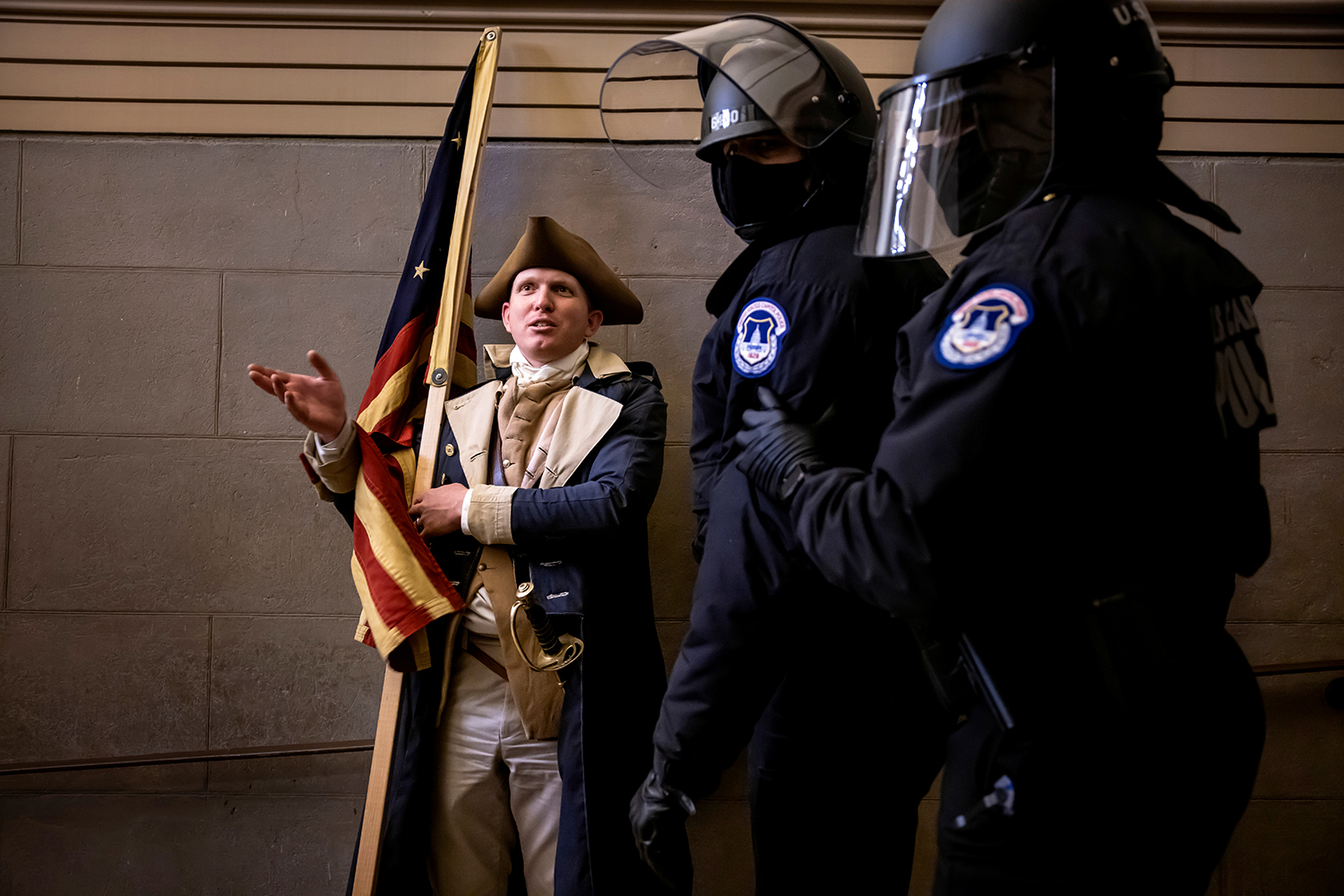
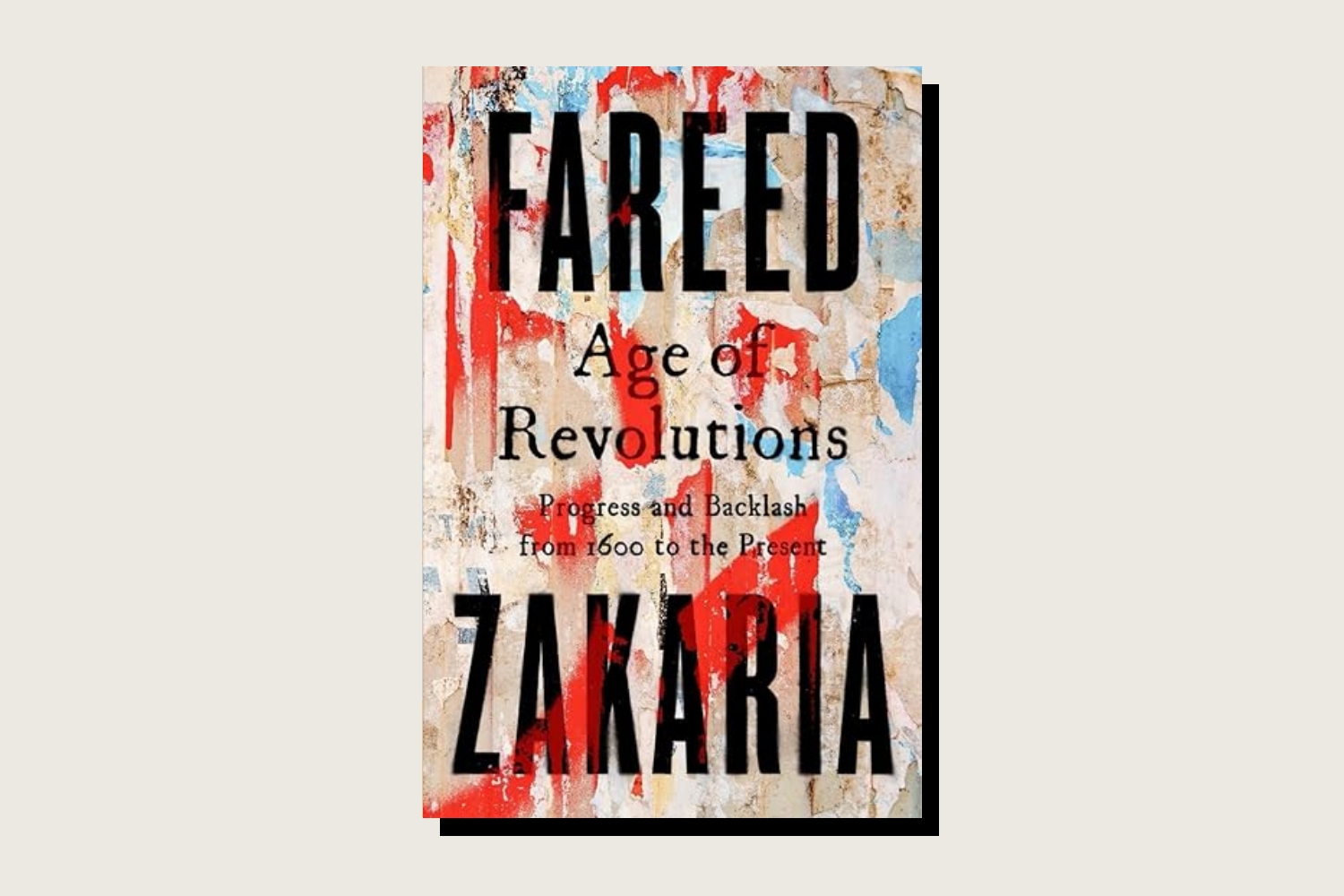
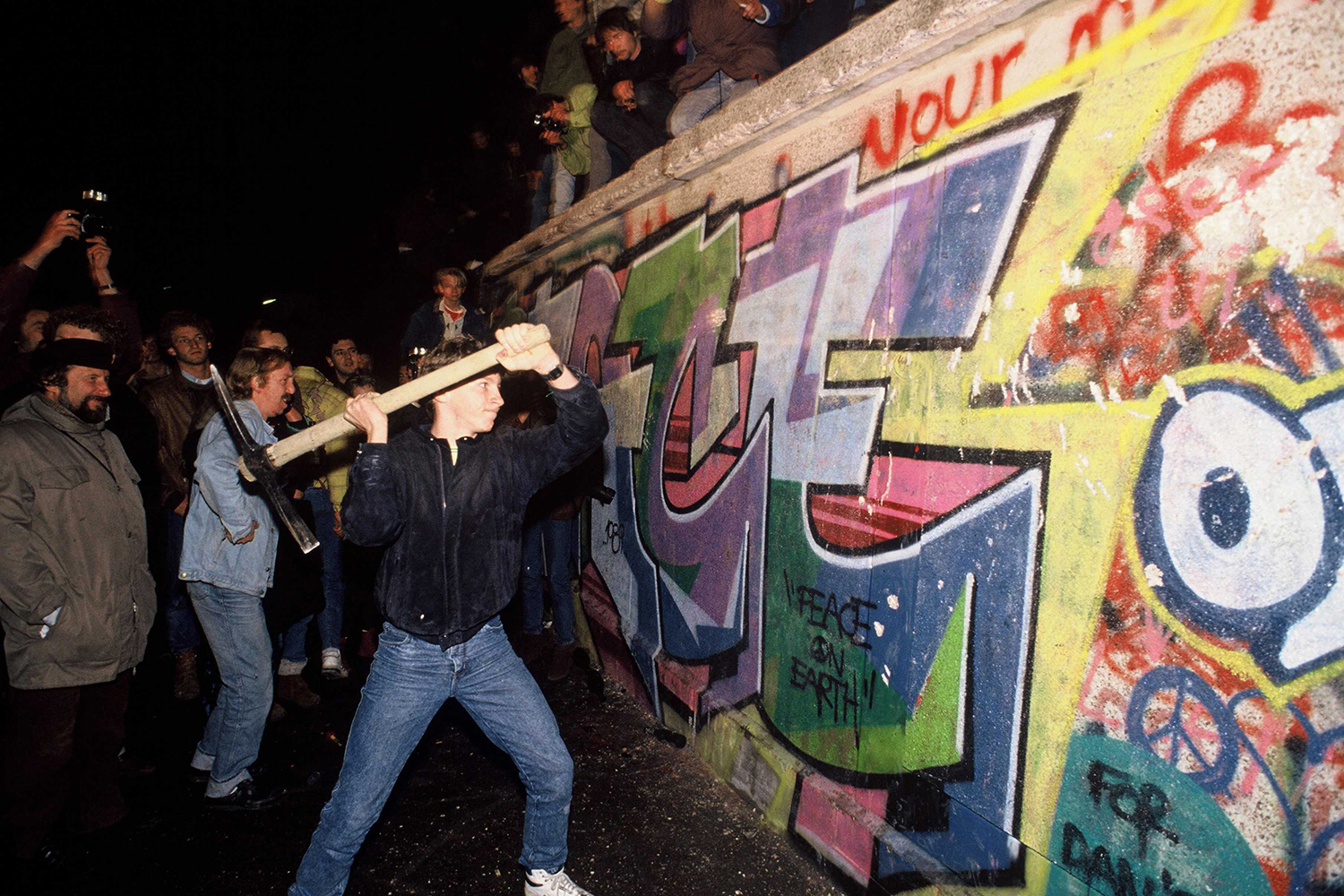
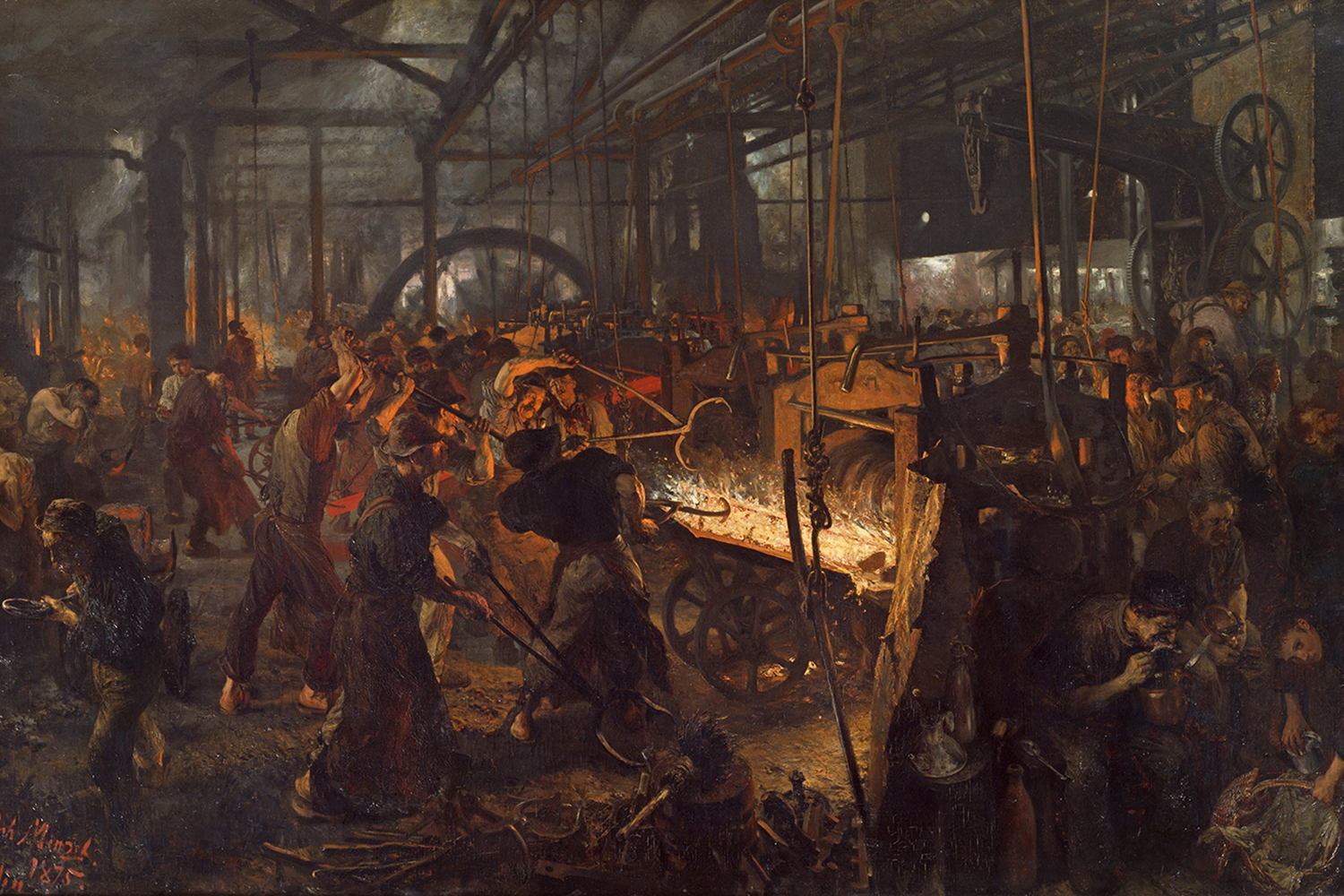
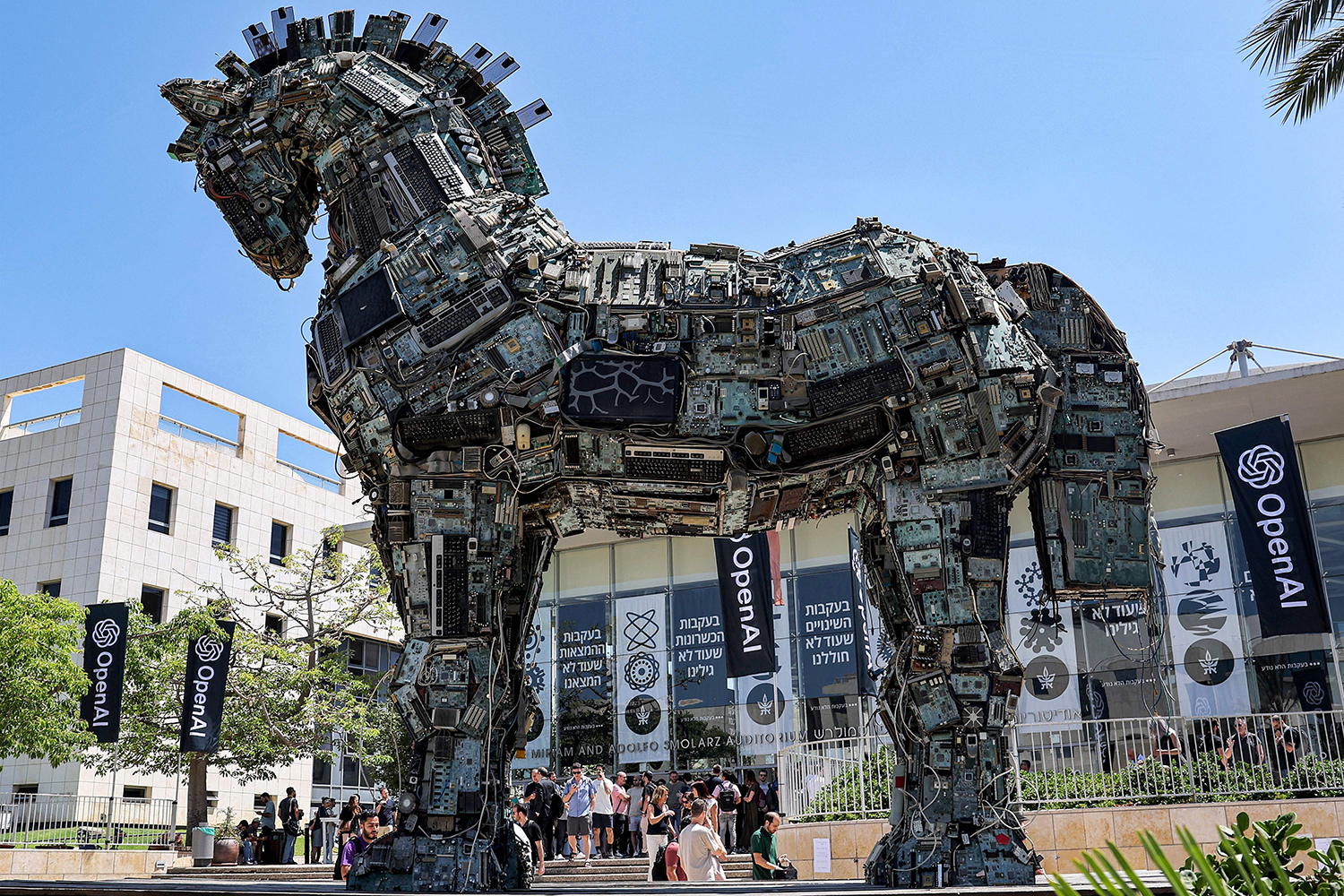



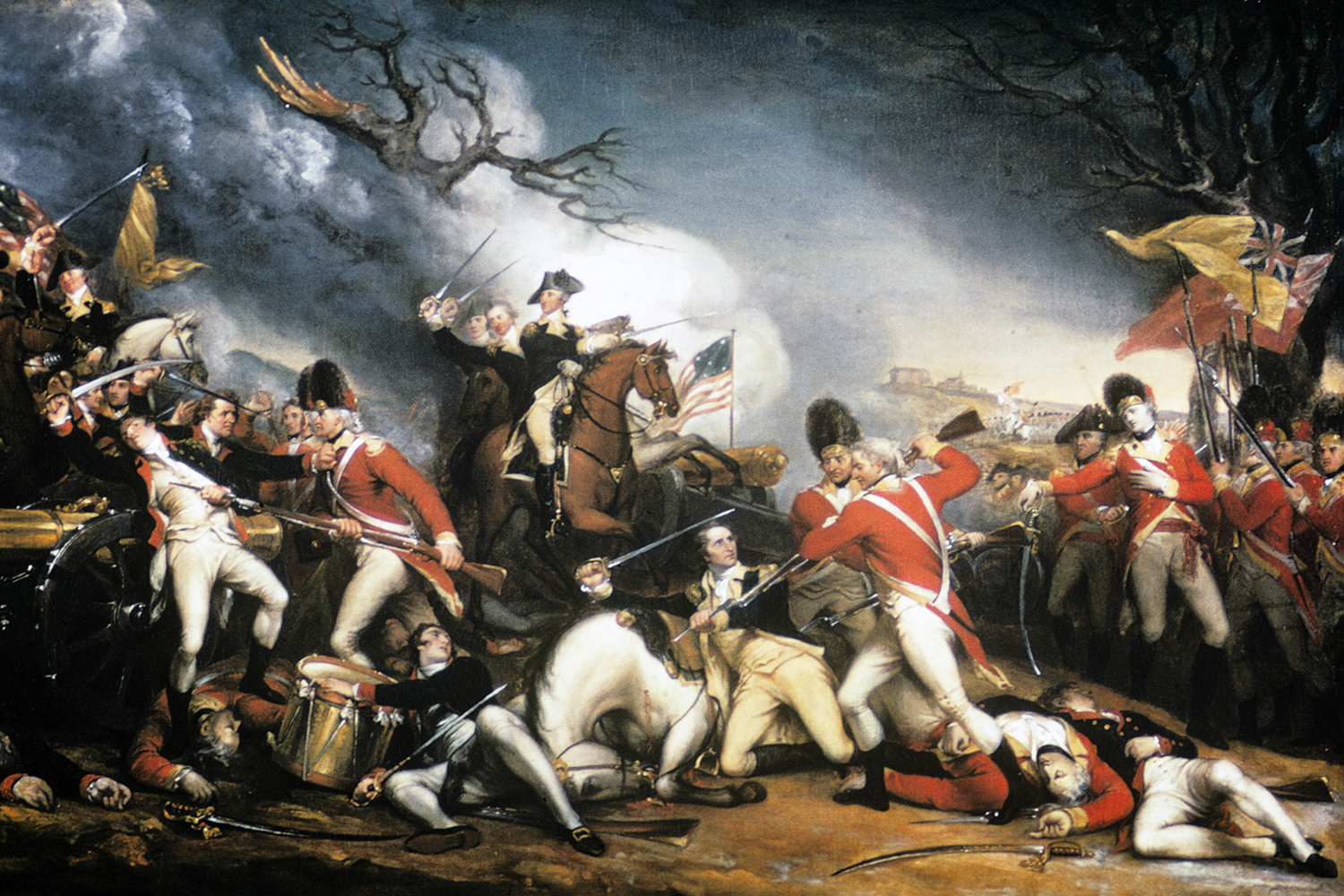
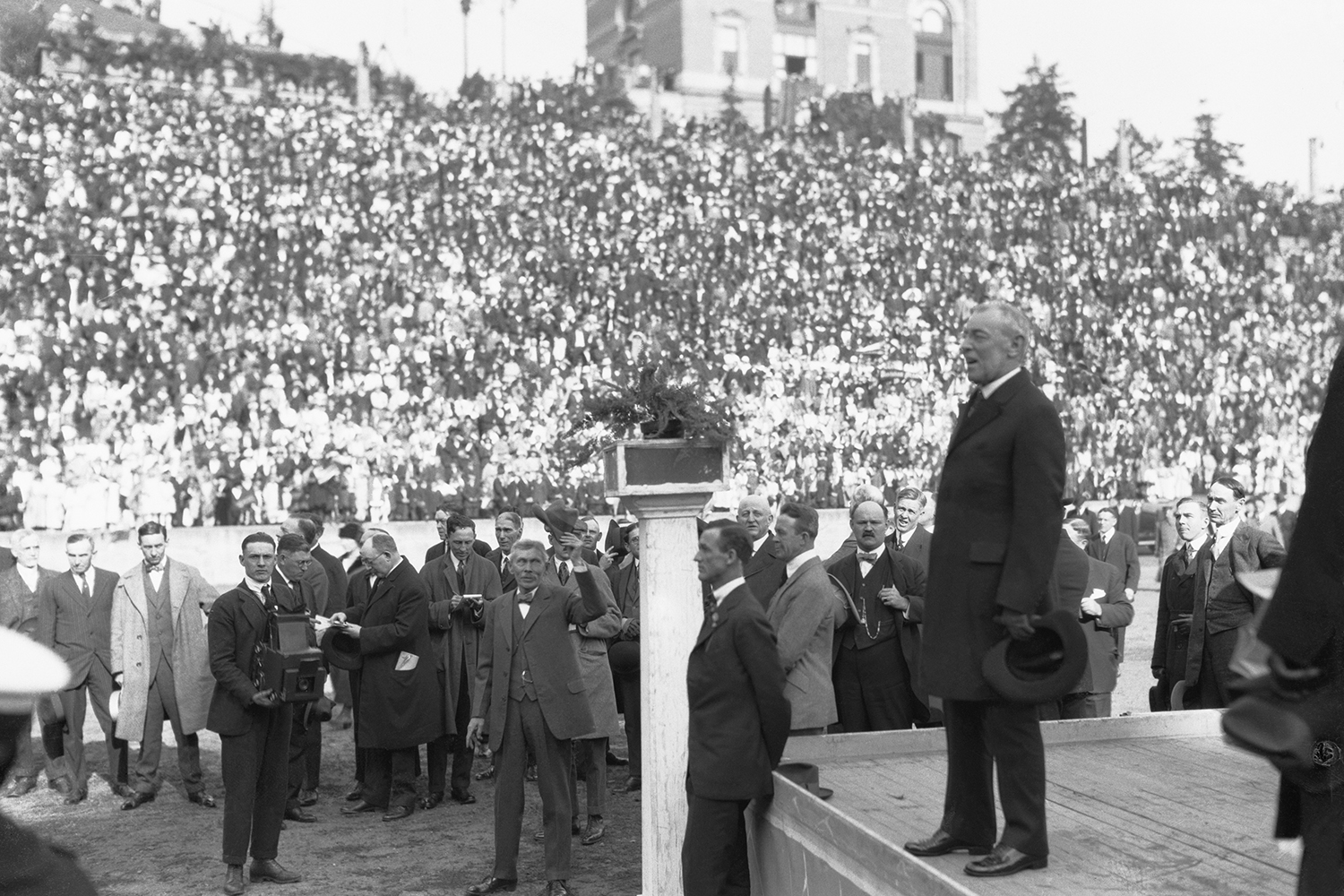
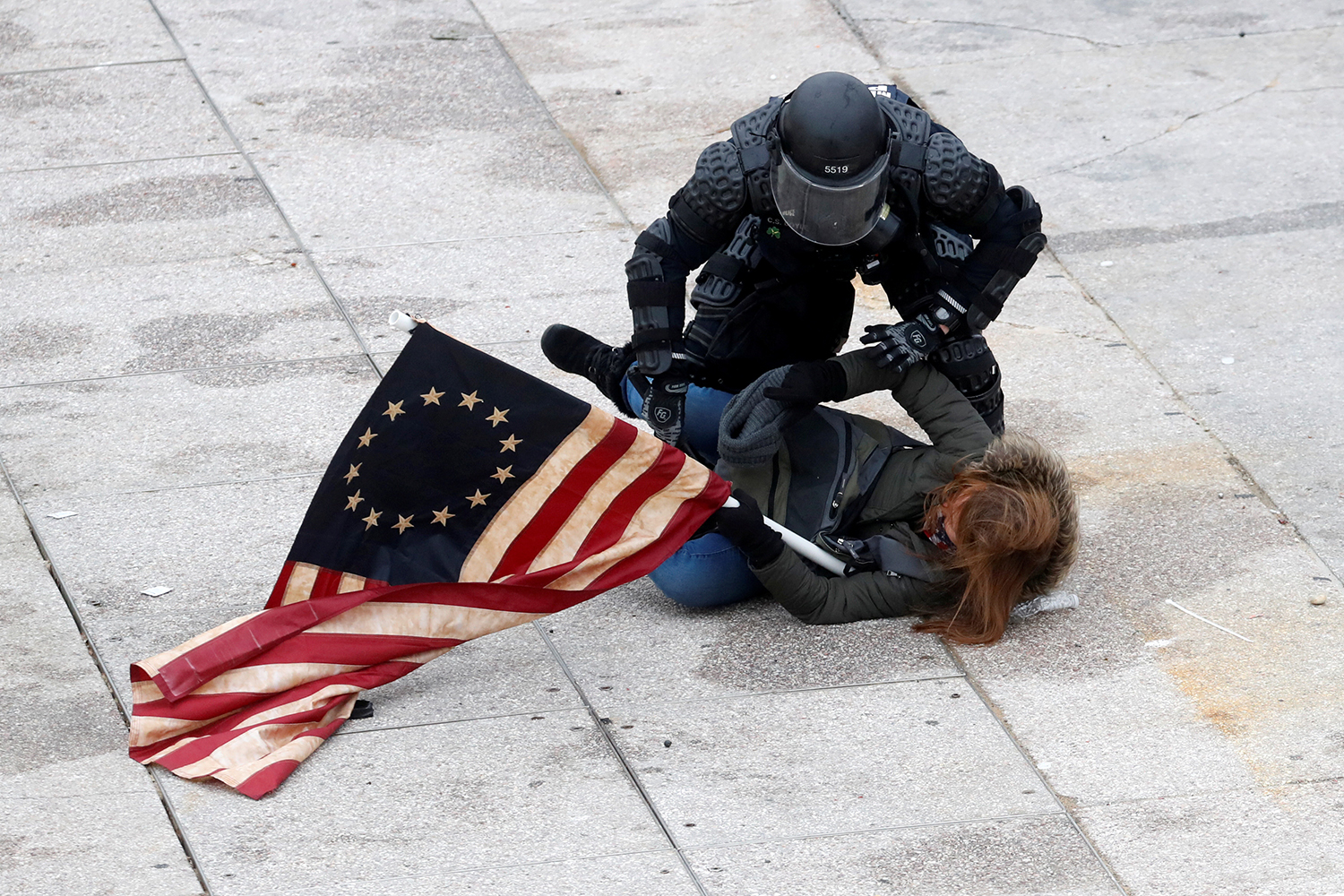
Join the Conversation
Commenting on this and other recent articles is just one benefit of a Foreign Policy subscription.
Already a subscriber? .
Subscribe Subscribe
View Comments
Join the Conversation
Join the conversation on this and other recent Foreign Policy articles when you subscribe now.
Subscribe Subscribe
Not your account?
View Comments
Join the Conversation
Please follow our comment guidelines, stay on topic, and be civil, courteous, and respectful of others’ beliefs.